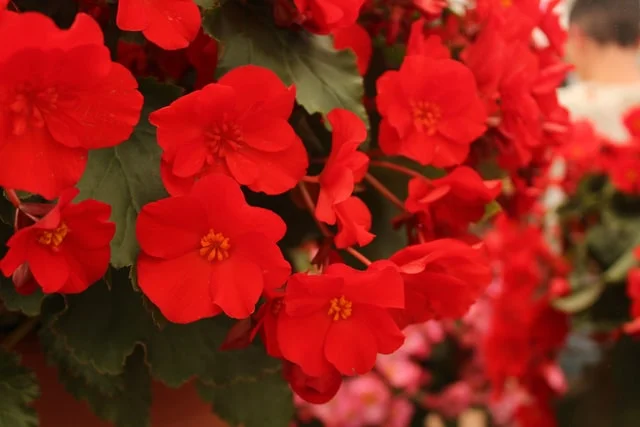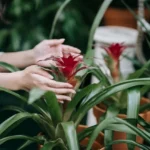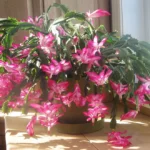Table of Contents
How to Care for Dragon Wing Begonia
The Dragon Wing Begonia are known for their beautiful, miniature, bell-like flowers and a high tolerance for heat and humidity.
They are popular plants grown both indoors as houseplants and outdoors in warmer climates. If you would like to learn all you need to know about the proper care of your Dragon Wing Begonia, please read on.
How to Care for Dragon Wing Begonia
Dragon Wing Begonia are a unique cane-type variety of Begonia cultivars, their name comes from their long, semi-woody stems which are often thought to resemble the look of bamboo.
The plants are officially classified by the name begonia x hybrida Dragon Wings’ and the plants themselves are sterile and incapable of producing off-spring through regular seeding.
Often confused with the related cane-type Begonia, Angel-Wing, the two can be differentiated by the lack of spots or patterns on the leaves of Dragon Wing Begonia.
The plants grow up to two feet tall and a similar size abreast and thus can have a rather bushy appearance.
They are recognizable by their wing-shaped, dark-green leaves and their drooping yet upturned stems that terminate in blazes of red, pink or white blooms during the growing season.
What does your Dragon Wing Begonia require?
Dragon Wing Begonia are incredibly hardy plants that can withstand a variety of environments, however, if you want the optimal conditions for your plant, consider the following requirements:
Light Requirements
Dragon Wing Begonia can tolerate a wide variety of sun levels. They can be perfectly happy anywhere on the spectrum from full-shade to full-sunshine but are happiest somewhere in the middle.
If you are growing your plant outdoors in a warmer climate, it is best to look for partial shade in the afternoon, in order to give your plant a break during the warm summer months.
Temperature Requirements
Dragon Wing Begonia requires an outdoor temperature that stays well above freezing. The plant can be used as a suitable undercover if grown outside and can be grown as a perennial in USDA zones 9-11.
In colder climates the plants are best treated as annuals when planted outside, but they can be brought in and cut back to overwinter.
When cultivated as a houseplant, Dragon Wing Begonia are happiest at a 70-75-degree Fahrenheit range during the day and an absolute low of 60 degrees Fahrenheit overnight.
Soil Requirements
Dragon Wing Begonia can tolerate neutral to slightly acidic soil. For this plant it is recommended to use a loamy, sandy potting mix. Avoid anything with clay as a base.
Rich, moist soils that drain well are ideal for planting your Dragon Wing Begonia. If you are growing you plant indoors, be sure to choose a pot with a drainage hole so that it doesn’t end up sitting in water and developing root rot.
Humidity Requirements
Dragon Wing Begonia requires a fair amount of moisture, at around 50-60% relative humidity when grown indoors. If your home is naturally more arid than this, there are many things you can try to combat this.
One tip is to group your plants together, as this will naturally raise the relative humidity in the immediate area. You can also try putting them in a room with a humidifier or using a pebble tray.
Whatever you do, don’t spray or mist around your Begonia, this is much more likely to cause issues like fungal growths on your plants.
If you see a white powdery substance on your plant that is most likely what this is. To combat this, simply keep you plant as dry as possible and remove any affected portions of the plant.
How to Water
Water you Dragon Wing Begonia whenever you notice the top inch of soil has lost all moisture.
This is typically once every week, though it will vary depending on your plant. To check if your Begonia needs watering, stick a finger into the topsoil past the first knuckle, if the dirt around your fingertip feels dry, it is time for a watering.
During the winter period, water less frequently, about approximately once a month. This is because during the winter the plants dormancy kicks in and it requires less water.
If you notice your Dragon Wing Begonia is sitting in water, remove it immediately. Never leave your plant in standing water, doing so will almost certainly cause root rot.
How to Fertilize
Fertilizing your plant requires a liquid-soluble fertilizer, whether it is located indoors or out. Dilute by half whatever the normal recommended amount of your fertilizer is. Fertilize every two weeks during the spring and summer growing season.
During the winter you can fertilize less frequently, approximately once a month. Fertilizer burn is more likely to occur in the winter. To avoid fertilizer burn, be sure that the soil is already moist before you begin fertilizing.
Extra care tips for Dragon Wing Begonia
Pests & Diseases
When grown outdoors Dragon Wing Begonia are resistant to rabbits and deer. If you encounter issues like whitefly or mealybug infestations, simply remove them by hand and cut away any damaged parts of the plant.
Besides the above-mentioned issues, such as root rot, there is little to worry about with Dragon Wing Begonia. In fact, they even are known to attract hummingbirds.
Pruning
Dragon Wing Begonia is a self-cleaning style of plant, this means that its blooms will fall off on their own and the plant doesn’t require any pinching of spent buds. However, if you choose to pinch dead heads you will encourage further blooms.
To keep your plant compact trim any stems that are growing much more rapidly than the others, especially if they are producing few leaves.
When bringing you plant in to overwinter it is best to cut your plant back until it stands at about 5 inches. Doing so will encourage strong new growth in the spring.
Propagation
Propagation with Dragon Wing Begonia from seed is nearly impossible due to the size and quality of its seeds.
Luckily, there is always the option of planting a cutting taken from your own plant. Simply choose a length of stem that looks healthy and make sure your cutting is around 4-6 inches in length. Look to make your cut just below a leaf node.
Use a sharp, clean cutter and plant immediately in moistened, sterile potting mixture. Plant your cutting’s stem at least an inch deep into your potting medium. Place it in a warm space where the specimen will receive full, but indirect, sunlight.
Water the cutting when the soil seems like it has lost its moisture. The cutting is ready to plant outdoors when it shows new signs of growth and after the last threat of frost has passed.
Photo by Rebecca Niver on Unsplash



